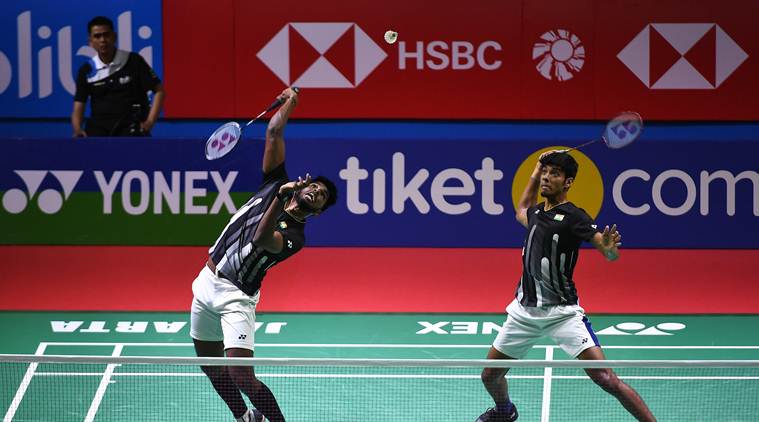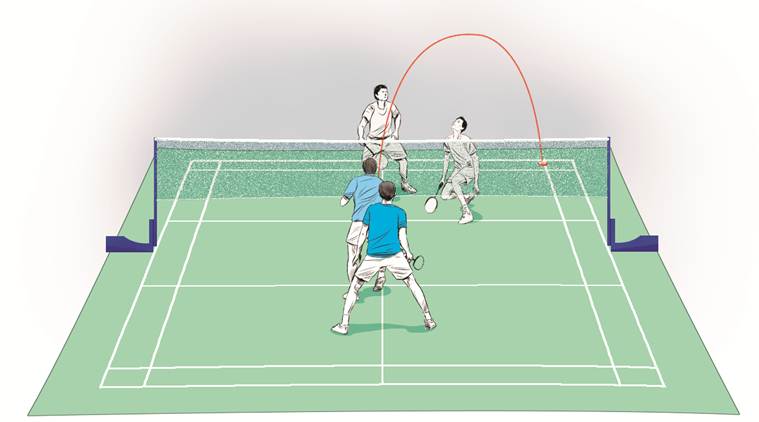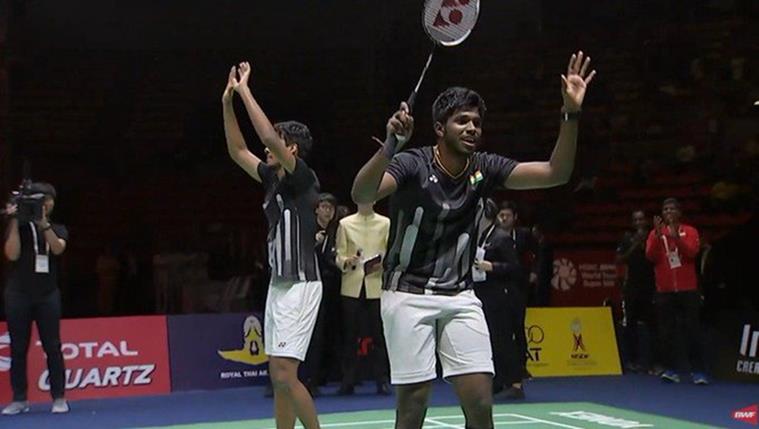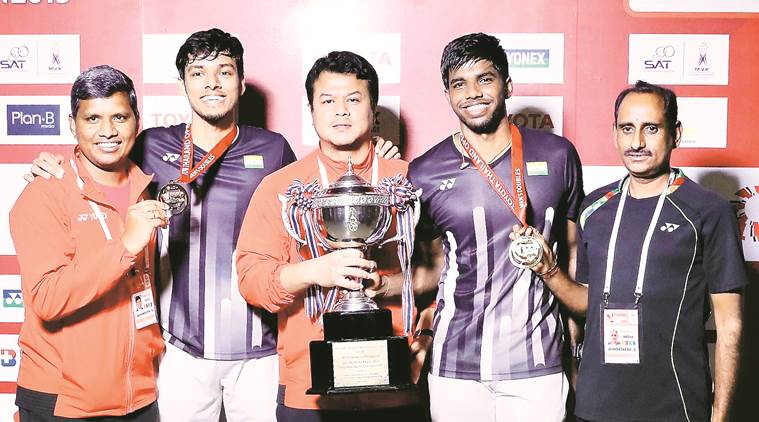
At 19-18 in the opening game of the Thailand Open final, Saatwiksairaj Rankireddy got ready to serve with a complex, risky thought flashing through his mind. It is all very well to say, “the important thing is to keep it simple” in the closing stages. But if the Saatwik-Chirag pairing had to win the final against third-seeded Chinese Li Jun Hui- Liu Yu Chen, a touch of bravado, a dash of madness was needed.
It came at that point when Saatwik sent a frisbee-like flick serve that completely stumped the Chinese pair.
Read | We never felt inferior to any doubles team, says Satwiksairaj Rankireddy
What could’ve been a perilous 19-19 had the flick serve been returned by the Chinese or even called a fault, turned into a 20-18 advantage that would eventually inject such confidence into the Indians that it fetched them their biggest title.
Read | Indian men mark arrival in badminton’s speediest, strongest, toughest event
Badminton doesn’t have provisions for an aggressive ace like in tennis. The shuttle manual necessitates a defensive first shot in a rally and a serve is barely ever a weapon. But not when Indian badminton’s big-hitting Hulk wants to swap all that powerplay for a geeky turn (or twist of wrist) as Dr Bruce Banner.

Here’s how the man recalls that precise moment: “Well, I knew they will rush to the net at that point. And I thought they wouldn’t anticipate at that time that anybody will take a risk like this.”

The backhand parabolic flicked serve that zipped over the opponent was planned right as the Chinese receivers, both visibly a little anxious, were leaning forward at the net, eyes screwed in attention, waiting to pounce, expecting a low serve to their front. “I’ve played it in matches before the final, but this was crucial,” Saatwik avers.

Badminton’s “ace” is like a swipe that whizzes past the nose. “It’s when opponents are standing ready to receive in the front,” explains former international Arvind Bhat, who admits to being foxed by it – but only in doubles. “What you do is send it back when they expect it in front. It’s hit with a fataak-se (whippy) wrist action.” It’s a subtle start trick and demands the server not show any exaggerated swing of shoulder or elbow to the opponent. On Sunday, it happened suddenly and audaciously – too fast for badminton watchers to dwell on the beauty of it though the commentators couldn’t resist a squeal of delight. “Chinese would be expecting it low with their momentum in front when leaning and that’s where gravity would point too,” Bhat says. But that’s when Saatwik pulled off the cleverest touch – send a flick serve looping back, to disarm the Chinese rushing in the opposite direction for a quick kill.
Read | Saatwiksairaj-Chirag outwit world champions for India’s biggest doubles title
While it’s used widely now, players of an earlier generation preferred the forehand short serve mostly in a sport where serving itself is highly underrated and rarely practised as a speciality. When Pullela Gopichand won the All England Championship, he served predominantly forehanded even while a player like Peter Gade had started to predominantly use backhand flick starts.

In India, doubles player Pranav Chopra uses it quite effectively, as did Akshay Dewalkar before. Both V Diju and Rupesh Kumar, who played in the last decade, as well as Jwala Gutta, would sneak in a few flick serves in between as surprises. But success – in terms of scoring points – is rare and one needs a keen eye to observe when opponents are most likely to be deceived. Saatwik’s flick serve had a long stream of thought crunched into one assumption – that the Chinese wouldn’t see it coming. But most flick serves tend to be played instinctively, though they all need strong wrists to place them precisely. Saatwik had been playing smartly – all placement, not so much power, at the net the whole of the first game, and a couple of snappy returns earlier gave him the confidence to pull it out of the bag at that critical juncture.
Read | Sports fraternity celebrates ‘great win for the Indian doubles’ as Satwik-Chirag win Thailand Open“There’s a big risk,” says Diju, who jokes that Indians play it prolifically because the height measuring devices are not present at all local tournaments. “Flick serves need to start from a higher height than low forecourt serves. So you have to be careful of not being called for a fault,” he warns, while admiring the cheekiness of the young Indian doubles players. “They are all so confident!” he gushes, while adding that they train for hours to get it perfect just like they would do for a smash.

Former doubles shuttler Leroy D’Sa insists the timing of using it is crucial. “Saatwik used it to break the comfort zone of the Chinese. They were beaten because Indians had built a pattern to serve in front. Serves are rarely winners in badminton. But Saatwik used it as the most attacking of defensive variations permissible to outfox the Chinese and unsettle their rhythm,” he ends. Indians would go onto win in three tight games, but the fear was instilled at 20-18 in the first.